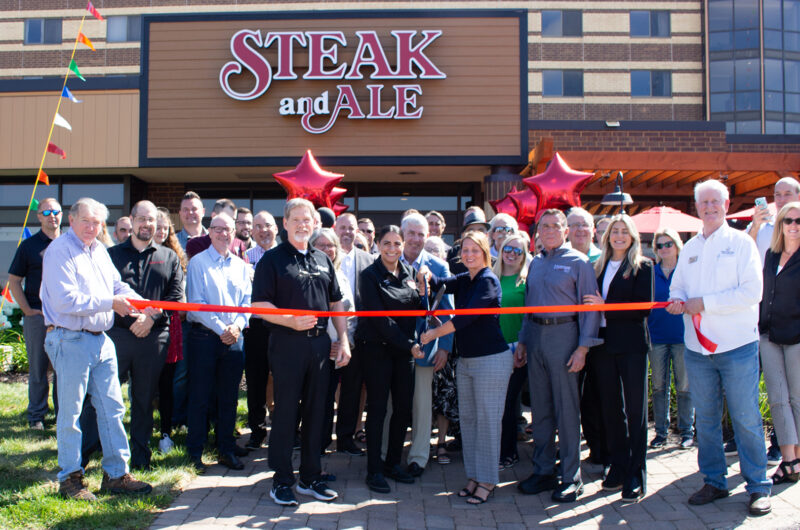Whether you accept transient or group business to your hotel is more than just a revenue management question. It’s also a risk management question. How much are you willing to risk? And what is the philosophy of the hotel, the ownership, the general manager, and other stakeholders? Do they want to take a high risk and get a high return, or do they want to minimize the risk for a more reliable income?
What’s better?
It depends on the market. And it depends on how you want to run your business.
There are many differences between group and transient: the booking lead time, the price sensitivity, and guests’ needs. For example, a transient leisure guest is more likely to book last minute. In contrast, a group is going to book in advance – the larger the group the earlier it’s going to book.
When you live in a big city like Vancouver, where I’m from, and you have a major convention center, you’re looking at a group business lead time of one to two years in advance. They want to ensure that they have the right property and the right number of rooms. And maybe they have specific requirements, like 50 rooms with an ocean view, and they can’t risk not securing that, so they’ll book in advance.
They’re also going to be smart. They realize that the earlier they book the lower the rates are going to be.
What’s on the books?
So, here’s the dilemma. If group business has a lower average daily rate (ADR) than transient, which it always does, do you put the group on the books in advance and sell the remaining rooms to transient at a higher rate? Or do you save as many rooms as you can until the last minute so you can sell more rooms to transient, at a higher rate, closer to stay date? For this scenario, we’re thinking about just a room without considering F&B or any other revenue streams.
Logically, it’s better to wait until the last minute and sell everything to transient. But running a hotel like that, your team is going to be stressed!
Imagine, you’re the revenue manager of a 300-room property, and one week out from the arrival date you have only 30% on the books. Your GM is going to ask “What’s going on?,” especially if your comp set is trending ahead on occupancy on the books.
You’re telling your GM, “Don’t worry, we’re going to sell them all at the last minute for $500 a night, whereas our competitors already sold out at $200.”
Sounds good, right?
When I worked as a revenue manager in Vancouver, that was my strategy. I would let my competitors take all the group business booked in advance, and when there wasn’t enough inventory in the market, I would take the transient overflow at a premium rate. That was a strategy I could confidently work with because I knew there was more demand than supply in Vancouver.
But what happens when you work in a market where there’s a more delicate balance of supply and demand where it’s difficult to forecast because the demand fluctuates very heavily?
You thought it was going to be busy. So, you rejected the group book requests and then there’s no transient business, either. All your competitors are now doing 95% occupancy with a good balance of transient and group. And because they’re at 95%, they only have 5% inventory left to sell. They can be ambitious with their rates. You’re at 40% on the books and your head is on the table.
It’s not just about rooms
There are also ancillary revenue components for you to consider.
A very large group may come with meeting space rental revenue, which is 100% pure profit. Then you have F&B. The group may require breakfast, lunch, and dinner, and maybe a gala dinner event to close.
With group business, you may be sacrificing your room ADR, but you get all these other ancillaries.
With transient it can be more difficult to quantify because not enough hotels track how much money their guests spend in the different outlets. They don’t pull folio data into their revenue calculations.
The total guest value will also vary by property. If you’re in a cluster revenue role, you need to understand these differences, so that you know where it would be most profitable to place your group booking.
For example, when I worked at the Four Seasons in Korea, we had nine restaurants and people stayed at our hotel because they wanted to experience all these dining options. The guests would mostly eat at the hotel, which was great. Similarly, when I worked at an airport hotel in Vancouver, we had one restaurant, but there was nothing else around for the guests to choose from. Again, the F&B revenue stayed in-house.
Now, a luxury resort that offers suites may think they want to target the family market as they need the larger space. However, families can be more price-conscious on their F&B spend. They may book your premium suite but will most likely go out to eat as a five-star restaurant might not suit a five-year-old. Instead, this resort should be marketed to 20-30-year-olds. They might not book the large suite, but they will eat at the restaurant, have cocktails at the bar, book spa treatments, etc. Their total spend will be higher.
But again, transient guests will book closer to the stay date. What is better? The guaranteed group business or the potential transient business?
Hotels should do everything they can to understand on average how much each transient guest spends. And this needs to be specific by segment: leisure, corporate travel, wholesale, etc. This is so that you can do an accurate group displacement analysis.
Not all bookings are created equal
A group displacement analysis lets you see how much transient business you would displace by taking the group. To do this, you need a good understanding of what your future business might look like. You need to know, if you take a group of 50 rooms, what does that mean if you’re displacing 50 corporate travelers? You need to know how much those corporate travelers will spend, in total, at your property. The more granular you can be, the more accurate your displacement analysis. Include F&B spend and spa bookings for transient; and coffee breaks, airport transfers, and AV costs, for groups.
Here’s a scenario. You’re considering displacing $10,000 in transient room revenue to take a group, which you believe will also achieve $10,000 as they need F&B. Now, these two figures are not the same.
$10,000 in room revenue will achieve, on average, a 70% profit margin = $7,000.
F&B has a profit margin of about 30%. A $10,000 contract that is a mix of rooms and F&B will make you less money. Your group needs to bring you more than $10,000 for you to consider displacing transient business. This is where BlockBuster, our group business solution, comes in. It can tell the difference between those two lots of $10,000.
Balancing group and transient requires confident revenue management, targeted marketing, and managing risk. But if you get it right, your hotel will reap the rewards.



